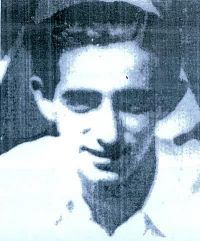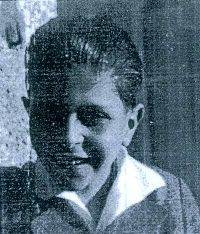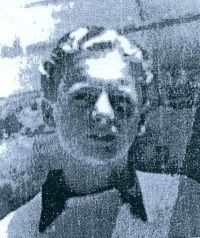ЧАСОПИС НОВИ ОМАНУТ
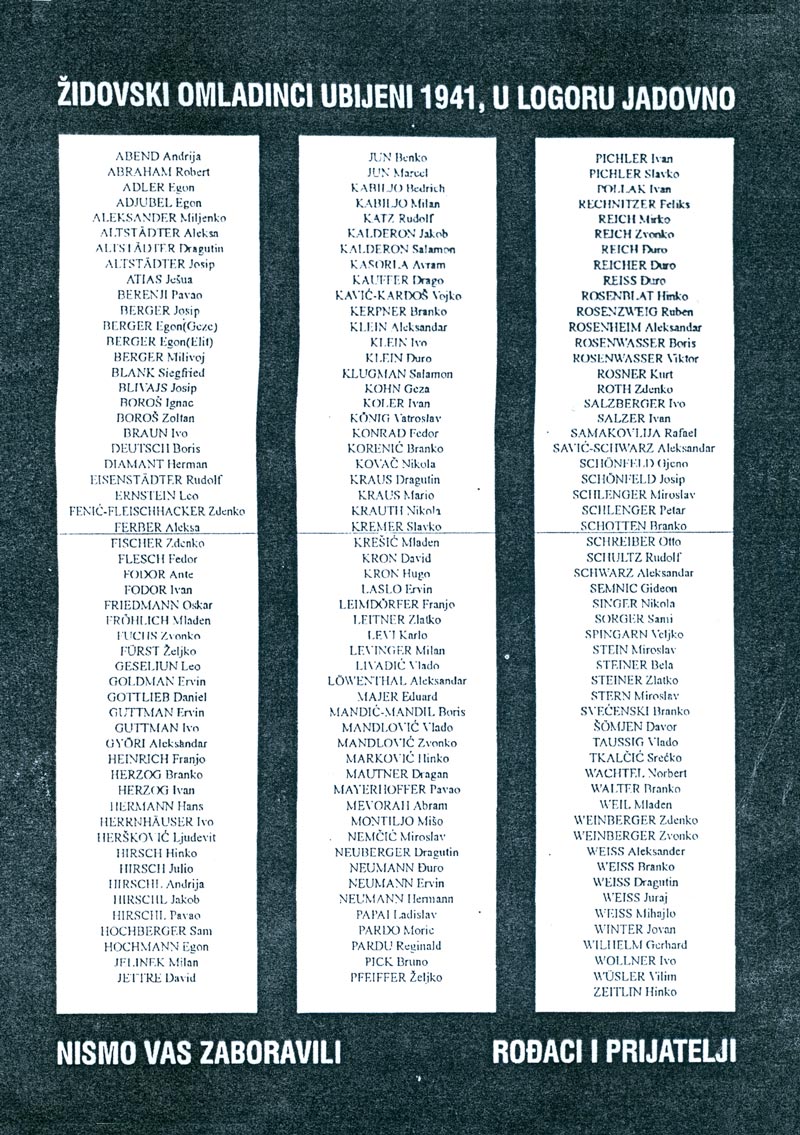
Загреб, новембар – децембар 1998/5759
Narcisa Lengel – Krizman и Mihael Sobolevski:
Тешко је установити којим су се редом репресивне мјере у свим дијеловима Независне Државе Хрватске почеле проводити. Прве су на удару биле особе које су потпадале под удар расних закона (од 30. априла 1941), затим југославенски орјентисани појединци, познатији „љевичари“, истакнути синдикални функционари и неки комунисти, јер општа хајка на комунисте започиње тек након њемачког напада на Совјетски Савез (22. јуна 1941), будући да усташе из тактичких разлога до тог времена (још је био на снази пакт о ненападању између нацистичке Њемачке и Совјетског Савеза) нису почели систематски хапсити и прогонити комунисте.
Једна од првих акција одмах након проглашења усташке државе (10.априла 1941.) био је захтјев за наплату контрибуције. Поступак у вези с утврђивањем и овјеривањем контрибуције био је готово увијек исти. Нијемци и усташе ухапсили би најимућније и најистакнутије Јевреје неког мјеста и држали их тако дуго као таоце док сви Јевреји тога мјеста не би прикупили, у одређеном року, становиту своту новца. Тако су Нијемци у Загребу ухапсили неколико јавних и културних радника Јевреја већ 10. и 11. априла 1941, а усташе су затим од 25. до 28. истог мјесеца ухапсили већу скупину адвоката, адвокатских приправника и поједине имућне Јевреје и све их интернирали у логор у Керестинцу (1) основан 19. априла 1941. – дакле и прије доношења Законске одредбе о расној припадности и Законске одредбе о заштити аријевске крви и части хрватскога народа (30. априла 1941.). Од априла до јуна 1941. хапшења Јевреја била су појединачна, а масовна хапшења и депортације у логоре почињу поткрај јуна и кулминирају током јула, августа и септембра исте године. Завршно су ескалирала у августу 1942, а посљедње депортације преосталих Јевреја – многи из мјешовитих бракова – догодиле су се у мају 1943.
У том хронолошком слиједу организованог прогона Јевреја изнимка је хапшење групе младића од 17 до 25 година старости у Загребу 29. и 30. маја 1941., већином средњошколаца завршних разреда гимназија, студената и мањим дијелом занатских радника. Били су то углавном чланови разних секција спортског друштва Макаби, који је окупљао јеврејску омладину (2). Објављујемо први пут имена свих 165 тада ухапшених:
Сви су 31. маја 1941. укрцани у три жељезничка вагона, с пратњом од десеторице редарственика „ којима се издају бесплатне жељезничке карте за Копривницу и натраг“ (4), одведени у Копривницу уз образложење од одлазе на „вршење ђачке радне службе“ у трајану од осам недеља. Првих десетак дана били су смјештени у објектима Творнице кемијских производа „Даница“ (покрај Копривнице) која је прије рата обуставила производњу и гдје је већ 15. априла 1941. основан први логор ограђен жицом и под усташком стражом. (5)

Aleksandar Savić – Schwarz |
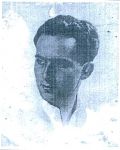
Norbert Wachetel |
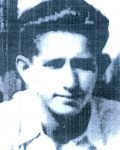
Ignac Boroš |
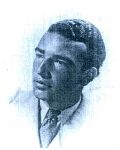
Mladen Frohlich |
По доласку у логор најприје су били смјештени у велике заједничке просторије с осталим логорашима, с којима су и одлазили на рад у оближње село Дрње на затрпавању ровова и осталих фортификацијских уређења које је југославенска војска изградила у близини мађарске границе. Јеврејска богоштовна општина у Загребу, на приједлог „Родитељског вијећа у крилу општине“ упутила је Усташком редарству – Жидовском одсјеку у Загребу – молбу да се ти омладинци преселе у Копривницу у просторије тамошње Уљаре, те „изјавило своју спремност да сноси трошкове пресељења, да о свом трошку оснује и уздржава кухињу и да из својих средстава плаћа потребну стражу“. (6)
Испостава Усташког редарственог повјереништва – Жидовски одсјек у Загребу – (11. јуна 1941.) обавјештава Усташко редарство у Копривници „да у вези са издржавањем логора жидовских омладинаца из Загреба одобрава се:
1.пресељење логора у уљару
2.успостава самосталне кухиње и уздржавање о властитом трошку
3.отварање уреда Жидовске богоштовне опћине у Копривници
4.издавање трајне пропуснице за поменути логор представницима тамошње Жидовске богоштовне опћине: Reichu Milanu, dru Hirschleru Slavku, Rosenbergu Žakiu, увијек само по једном
5.увођење телефона број 5 за потребе Жидовске богоштовне опћине у Копривници; тај телефон треба да стоји под сталном контролом Усташког редарства у Копривници
6.за издавање пропусница за Загреб највише једанпут у 14 дана једној од особа поменутих у тачки 4.
Све ове одредбе издају се из хитних санитарних разлога, јер постоји бојазан избијања епидемичних болести.“ (7)
Да је та бојазан била оправдана свједочи и дозвола (од 6. јуна) коју је Усташко редарствено повјереништво – Жидовски одсјек у Загребу – издало др. Žigi Hefneru, љекару из Загреба, да може отпутовати у Копривницу и „вршити сталну љекарску службу међу жидовским омладинцима који се налазе у фабрици Даница“. (8)
| 1. ABEND Andrija
2. ABRAHAM Robert 3. ADLER Egon 4. ADJUBEL Egon 5. ALEKSANDER Miljenko 6. ALTSTÄDTER Aleksa 7. ALTSTÄDTER Dragutin 8. ALTSTÄDTER Josip 9. ATIAS Ješua 10. BERENJI Pavao 11. BERGER Josip 12. BERGER Egon (Geze) 13. BERGER Egon (Elit) 14. BERGER Milivoj 15. BLANK Siegfried 16. BLIVAJS Josip 17. BLIVAJS Saša (napomena olovkom: vratio se kući) 18. BOROŠ Ignac 19. BOROŠ Zoltan 20. BRAUN Ivo 21. DEUTSCH Boris 22. DIAMANT Herman 23. EISENSTÄDTER Rudolf 24. ERNSTEIN Leo 25. FENIĆ-FLEISCHHACKER Zdenko 26. FERBER Aleksa 27. FISCHER Zdenko 28. FLESCH Fedor 29. FODOR Ante 30. FODOR Ivan 31. FRIEDMANN Oskar 32. FRÖHLICH Mladen 33. FUCHS Zvonko 34. FÜRST Željko 35.GESELIN Leo 36. GOLDMAN Ervin 37. GOTTLIEB Daniel 38. GUTTMAN Ervin 39. GUTTMAN Ivo 40. GYÖRI Aleksandar 41. HEINRICH Franjo 42. HERZOG Branko 43. HERZOG Ivan 44. HERMANN Hans 45. HERRNHÄUSER Ivo 46. HERŠKOVIĆ Ljudevit 47. HIRSCH Hinko 48. HIRSCH Julio 49. HIRSCHL Andrija 50. HIRSCHL Jakob 51. HIRSCHL Pavao 52. HOCHBERGER Sam 53. HOCHMANN Egon 54. JELENIK Milan 55. JUTTRE Davi |
56. JUN Benko
57. JUN Marcel 58. KABILJO Bedrich 59. KABILJO Milan 60. KATZ Rudolf 61. KALDERON Jakob 62. KALDERON Salamon 63. KASORLA Avram 64. KAUFER Drago 65. KAVIĆ-KARDOŠ Vojko 66. KERPNER Branko 67. KLEIN Aleksandar 68. KLEIN Ivo 69. KLEIN Đuro 70. KLUGMAN Salamon 71. KOHN Geza 72. KOLER Ivan 73. KÖNIG Vatroslav 74. KONRAD Fedor 75. KORENIĆ Branko 76. KOVAČ Nikola 77. KRAUS Dragutin 78. KRAUS Mario 79. KRAUTH Nikola 80. KREMER Slavko 81. KREŠIĆ Mladen 82. KRON David 83. KRON Hugo 84. LASLO Ervin 85. LEIMDÖRFER Franjo 86. LEITNER Zlatko 87. LEVI Karlo 88. LEVINGER Milan 89. LIVADIĆ Vlado 90. LÖWENTHAL Aleksandar 91. MAJER Eduard 92. MANDIĆ-MANDIL Boris 93. MANDLOVIĆ Vlado 94. MANDLOVIĆ Zvonko 95. MARKOVIĆ Hinko 96. MAUTNER Dragan 97. MAYERHOFFER Pavao 98. MEVORAH Abram 99. MONTILJO Mišo 100. NEMČIĆ Miroslav 101. NEUBERGER Dragutin 102. NEUMANN Đuro 103. NEUMANN Ervin 104. NEUMANN Hermann 105. PAPAI Ladislav 106. PARDO Moric 107. PARDU Reginald 108. PICK Bruno 109. PFEIFFER Željko 110. PICHLER Ivan |
111. PICHLER Slavko
112. POLLAK Ivan 113. RECHNITZER Feliks 114. REICH Mirko 115. REICH Zvonko 116. REICHER Đuro 117. REISS Đuro 118. ROSENBLAT Hinko 119. ROSENZWEIG Ruben 120. ROSENHEIM Aleksandar 121. ROSENWASSER Boris 122. ROSENWASSER Viktor 123. ROSNER Kurt 124. ROTH Zdenko 125. SALZBERGER Ivo 126. SALZER Ivan 127. SAMOKOVLIJA Rafael 128. SAVIĆ-SCHWARZ Aleksandar 129. SCHÖNFELD Gjeno 130. SCHÖNFELD Josip 131. SCHLENGER Miroslav 132. SCHLENGER Petar 133. SCHOTTEN Branko 134. SCHREIBER Otto 135. SCHULTZ Rudolf 136. SCHWARZ Aleksandar 137. SCHWARZ Božo 138. SEMNIC Gideon 139. SINGER Nikola 140. SORGER Sami 141. SPINGARN Veljko 142. STEIN Miroslav 143. STEINER Bela 144. STEINER Zlatko 145. STERN Miroslav 146. SVEĆENSKI Branko 147. SÖMJEN Davor 148. TAUSSIG Vlado 149. TKALČIĆ Srećko 150. TROSTLER Nikola 151. WACHTEL Norbert 152. WALTER Branko 153. WEIL Mladen 154. WEINBERGER Zdenko 155. WEINBERGER Zvonko 156. WEISS Aleksander 157. WEISS Branko 158. WEISS Dragutin 159. WEISS Juraj 160. WEISS Mihajlo 161. WINTER Jovan 162. WILHELM Gerhard 163. WOLLNER Ivo 164. WÜSLER Vilim 165. ZEITLIN Hinko (3) |
Сви су били – према том налогу – смјештени у просторије творнице уља у Копривници, гдје им је била организирана опскрба и омогућена лијечничка и друга помоћ. Њима – три дана касније – у исте просторије усташе доводе и групу од 19 жидовских емиграната из Аустрије, Њемачке, Мађарске и Румуњске (9) за које је Жидовска богоштовна опћина из Загреба затражила да им се као „принудно боравиште“ одреди село Драганић, гдје је управо у то вријеме био основан логор за Жидове – избјеглице, њих 181, (10)
Усташко повјереништво за град и котар Копривницу упутило је двадесетак дана касније (30. липња) Усташком редарственом повјереништву – Жидовском одсјеку у Загребу – опширно образложење које наводимо (без исправака) у цјелости:
„Прије свега се наслов упозорава на познату чињеницу, да је само мјесто Копривница тзв. жидовски елдорадо“, па да у том граду, обзиром на број становништва, имаде размјерно највећи број жидова, који су до сада имали сву привреду и водеће улоге у својим рукама.
Жидовима имаде град Копривница и његова околица захвалити, да је сва овдашња индустрија прешла у Србију, а радништво и сиротиња остали без круха. Овдашњи су жидови угњетавали домаће пучанство и грађане, својим спекулативним пословима многе и многе натјерали на просјачки штап, па и још данас имају смјелости пријетити се Хрватима најгорим стварима!
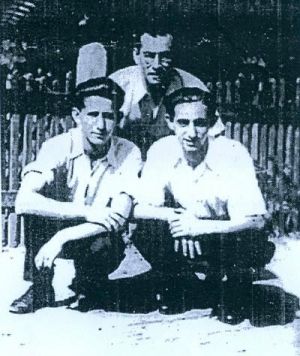
К свему тому, опажа се посљедњих дана сумњиво кретање овдашњих жидова, тајни састанци и договори, који се тако брижљиво приређују, да нам уз најпомнију пажњу, није могуће ући у траг, о чему се ту ради и с каквим намјерама. Уз то ово повјереништво не располаже нити са довољним бројем спретног и повјерљивог особља, које би било у стању провести извиде и тој тајни ући у траг.
Уваживши горње, одлука наслова, тј. жидовског одсјека Испоставе Уташког редарства, којом се одобрава пресељење жидовских омладинаца из Загреба у овдашњу уљару, отварање жидовске Богоштовне опћине (која уосталом у Копривници постоји), издање трајне пропуснице за поменути логор овдашњим жидовима (најистакнутијим пропагаторима и противницима Н. Д. Х. и дањашњег поредка) Реицху Милану, др. Славку Хирсцхлеру и Јакобу Росенбергу и увођење телефона!? па ма и под редарственом паском, никако се не може код овог повјереништва примити са одобравањем.
Ово повјереништво је слободно изразити своје мишљење, да би било најупутније сав тај жидовски живаљ, без разлике спола и доби, стрпати у овдашњи концентрациони логор „Даница“ у једну посебну зграду и ставити под најстрожу паску Усташке страже, (11) гдје би имали остати све дотле док се не би пружила могућност да их се из Државе Хрватске уопће одстрани. Многи од њих су огромни дио приграбљење вриједности инвестирали у Палестини. Градили су тамо палаче и основали читаве фарме. Тамо дакле и спадају, а с њима нека обрачуна сродна им раса.
Њемачко часништво и припадници Њемачке војске, који што у пролазу, што у краћем или дуљем задржавању у Копривници, као и разне техничке формације који се овдје задржавају на различитим радовима, отворено изразују своје незадовољство због преблагог поступка према жидовима и слободе коју они уживају. Пријете се чак и тиме, да у колико Хрватски Усташе жидовско питање не ријеше у оном смислу како га је ријешила и ријешава Њемачка, узети ће само ствар у своје руке и с њима ликвидирати.
Дакако, посљедице тога биле би и опет штетне по интересе Државе Хрватске, јер у том случају све оно, што је још од жидовске имовине преостало, не би прешло у руке Државе Хрватске нити Хрватског Народа. Такво увјерење црпи ово повјереништво на темељу свег горе разложеног.
Према напријед разложеном, ово је повјереништво слободно констатирати, да би се мјерама које одређује Испостава усташког ред. Повјереништва, жид. Одсјек, својим списом, само погодовало жидовској разорној пропаганди, омогућило им везу између њихове омладине и старијих, ако не и везу у читавој држави, а ово повјереништво присилило на организацију једног посебног Усташко-редарственог апарата за надзор тих љутих непријатеља свега онога што није жидовско.
Стога потписано повјереништво подастире предњи свој извјештај Наслову с молбом за подробније проучење и одлуку.“ (12)
На почетку липња 1941. казнионица Окружног суда у Госпићу претворена је у концентрацијски логор који је масован приљев заточеника отпочео у српњу и трајао до расформирања логора 21. коловоза 1941. године. Из логара у Копривници пребачена је у Госпић на почетку српња и група жидовских омладинаца о којима је овдје ријеч. Из Госпића су одведени у логор на Јадовном (засеоку на пропланку Велебита у густој шуми на висини од око 1200 метара), али нисмо утврдили са стопостотном сигурношћу да нетко од њих није био одведен у логоре на отоку Пагу и тамо страдао (13). Ти су логори такођер престали функционисати 19. коловаза 1941. године. (14)
Сматрамо потребним објаснити због чега је дошло до расформирања логора у Госпићу, Јадовну и на Пагу. Наиме, аспирације Мусолинијеве Италије садржане су још у предратним плановима у којима је Лика била само једна од зона талијанског продирања на Балкан. Од окупације, па све до средине 1943. године, Лика за Италију значи залеђе и заштитни појас за сигурност приморске анектиране зоне (и копнену вез с истом таквом зоном у Словенији). Личко је подручје улазило у тзв. Другу талијанску окупацијску зону у којој су Талијани држали, особито у Госпићу и Оточцу, јаке војне снаге, али су често премјештали трупе. Године 1941. Талијани су били присиљени три пута мијењати свој окупацијски статус. Од окупације до Римских уговора (10. травња – 18. свибња) на простору Лике Талијани су обнашли војну и цивилну власт, али под њиховим покровитељством и војном заштитом поступно се организира цивилна управа и војне формације НДХ. Међутим, након Римских уговора они су демилитаризирали тај простор у којем је сва цивилна власт прешла у потпуности органима НДХ. Оружани устанак до којег долази у љето 1941. изазвао је знатну забринутост Талијана и за разлику од отпора на анкетираном подручју (Далмација, дио Хрв. приморја и Горског котара) устанак у Лици тактички је шире проматран. Полазило се од увјерања да је геноцидна политика усташког режима против српског становништва искључив разлог избијања устанка. Како усташке и домобранске јединице нису успјеле у кратком времену угушити устанак, то се Талијанима идеја о поновној реокупацији тзв. Друге зоне наметнула као најдјелотворније рјешење. На основи споразума с владом НДХ (28. август 1941) Талијану су војно запосјели Лику; војне снаге НДХ потпале су од талијанско заповједништво и нису се могле повећавати, него само смањивати; припадници усташких организација морали су предати особно оружје, док је оружништво требало обављати редовиту службу заједно с талијанских карабињерима. Био је то разлог због чега су споменути логори укинути, а заточеници масовно ликвидирани. Од око 2500 Јевреја колико их је било у њима преживјело је само око 1500, који су тада одведени у логоре Јастребарско и Крушчицу, а затим у Јасеновац (мушки) и Лоборград (жене), гдје је највећи дио страдао. (15)
Изузев десеторице – из споменуте групе јеврејских омладинаца – остали су страдали у масовној ликвидацији заточеника у Јадовну непосредно прије коначног расформирања логора. (Та десеторица неколико дана прије ликвидације логора одведена су у Госпић „да чисте улице“ и на тај су се начин спасили од смрти у масовном покољу. (16)
Родитељи су, не знајући за трагичну судбину синова, упућивали молбе индивидуално или скупно Министарству унутрашњих послова да им се „дјеца ослободе“.
Тако је нпр. 20. септембра 1941. укупно 41 родитељ (потписани власторучно) упутио изравно министру сљедећу молбу:
„Дне 31. маја о.г. одпремљено је 165 јеврејских омладинаца, гласом приложеног пописа, на ђачку радну службу у логору „Даница“, Копривница. Сва су дјеца отишла са великим весељем, јер су знала, да ће радити и да ће се након 8 тједана вратити кући.
Ради тога обскрбила су се дјеца само на љетним и најпотребнијим стварима. Након 8 недеља логоровања у Копривници надала су се дјеца да ће се вратити кући, те да ће их други замијенити, али отпремљена су у логор Јадовно на Велебиту.
Сви су ти дјечаци одгојени за цијело вријеме школовања у хрватском духу, те су душом и тијелом осјећали се Хрватима. Били су чланови само хрватских и шпортских друштава, а дружили су се само својим хрватским школским друговима. Били су већином добри ученици и доброг владања. Познато је, да је велик број имућних жидовских ђака стално подупирао своје сиромашне колеге и подупирало све хрватске школске установе. То све могу посвједочити њихови професори.
Зима је пред вратима, а та дјеца нису ни за хладније вријеме обскрбљена, а камо ли за зиму. Ствари, коју су са собом понијела, сигурно су већ подеране, будући да се већ чеврти мјесец налазе на раду, а накнадно нисмо њима ништа могли послати.

Из горњих оправданих разлога молимо, да се наша дјеца, наведена у попису, врате својим родитељима из садашњих логора у Јасеновцу. До 30. септембра бити ће управо 4 мјесеца, што су та дјеца на раду у логорима. Тако би дјеци било омогућено, да барем привремено наставе науке и занат.За беспријекорно владање наше дјеце и да ће учити и марљиво радити, јамчимо солидарно као њихови родитељи својим животима.У нашој великој боли једина је наша нада, да се наша дјеца пред зиму поврате својим родитељима.“ (17)Десеторица омладинаца пребачена из Јадовна у Госпић неколико дана пред ликвидацију логора били су: Ivo Wollner, Boris i Viktor Rosenwasser, Dragan Mautner, Saša Blivajs, Emil Frojndlih, Ervin Guttmann, Srećko Tkalčić, Božo Schwarz i Aleksander, неутвређеног презимена. (18) Двојица из те групе – Saša Blivajs и Emil Frojndlich – ослобођени су још у Госпићу, а преостала осморица из Госпића су била одведена у логор у Јастребарском, а затим у Јасеновац. Били су међу првим логорашима у Јасеновцу, а уједно и међу најмлађима.
На почетку 1942. године Dragan Mautner и Božo Schwarz пребачени су у Стару Градишку, а затим у Феричанце и Обрадовце (логорске економије), а остала шесторица у прољеће 1942. су из Јасеновца пребачена у Стару Градишку гдје су умрли од тифуса. Dragan Mautner био је убијен у љету 1942. у Феричанцима, док је Božo Schwarz 15. септембра 1942. у групи са још шест логораша успио побјећи из логора и прикључити се партизанима на Папуку. (19)
Умјесто закључка: од 165 жидовских омладинаца ухапшених крајем свибња 1941. у Загребу свега су тројица преживјела!
БИЉЕШКЕ:
1. Диздар, Здравко, Логори на подручју сјеверозападне Хрватске у току другога свјетског рата, Часопис за сувремену повијест, Загреб 1990, стр. 90-92.
2. Шренгер, Жељко, Загребачки Макаби. „Два стољећа повијести и културе Жидова у Загребу и Хрватској“, ЖОЗ Загреб 1998м стр. 260-262; Крамер, Фреди, Удио Жидова у шпорту у Хрватској, исто, стр. 263-265.
3. Хрватски државни архив (даље: ХДА), фонд НДХ, бр. 28233.
4. ХДА, Ф. НДХ, бр.27146.
5. У логор „Даница“ први појединачни логораши смјештају се 18. априла, а поткрај мјесеца стижу и веће групе, тако да је већ 18. маја 1941. у логору било 1.007, 30 јуна 2175 и 15. јула 2.656 логораша. Но тада из логора одлазе транспорти заточеника у друге логоре, па у јулу 1941. од оних 2.656 логораша њих 1960 пребачено је у логор Госпић, 76 пуштено, а на њихова мјеста стижу други логораши из разних мјеста НДХ, али и из других логора (Јастребарско, Лепоглава). Од децембра 1941. логораши мушкарци упућују се углавном у Јасеновац, а жене с дјецом у Стару Градишку, а тек се појединци и мање групе пуштају на слободу. Логор је расформиран у септембру 1942. године. Претпоставаља се да је кроз тај логор прошло и до 5.600 логораша, од којих је више од око 3.000 страдало, понајприје у Јадовном, Јасеновцу и Старој Градишци, пуштено је око 500 логораша, а многи из других логора након краћег или дуљег боравка у њима. По националности Срба је било више од 3000, Хрвата око 1000, Жидова више од 600, Цигана – Рома око 400, а преостали били су припадници других националних мањна (исто као биљ. 1, стр. 88-89).
6. ХДА, ф. НДХ, бр. 27592а,
7. ХДА, ф. НДХ, бр. 27315.
8. ХДА, ф. НДХ, бр. 27957. Dr. Žiga Hafner (интернист) мјесец дана касније, одредбом Министарства здравства, упућен је Заводу за сузбијање ендемског сифилиса у Бањој Луци, одакле је распоређен у Жепчу. У јулу 1943. приступа партизанским јединицама. Преживио је рат (Romano Jaša, Јевреји Југославије 1941-1945, Жртве геноцида и учесници Народноослободилачког рата, Београд 1980, стр. 97, 382).
9. ХДА, ф. НДХ, бр. 27960, Били су то: Max Kutscher, Josef Wimmer,
Fritz Weisz, Adalber Bela Fischer, Max Steinhauer, Hans Markovics, Hedwiga Tudiower, Walter и Ladislaus Berenyi (сви из Беча), Ervin Sussmann, Max Cohn, Siegfried Lateiner и Gottlieb Meier (из Берлина), Jacob Heim (из Лајпцига), Otto Furst (из Граца), Andria Szanto (из Печуха, Мађарска), Lazar Weissberger (из Gyora, Мађарска), Tibor Ravasz (из Сомбора) u Eugen Klein (из Mediasa, Румунија).
10. Исто као и биљ. 1. стр. 89,
11. Број се усташких стражара од 67 у априлу до краја јуна 1941. (када је писан овај извјештај) повећао на више од стотину (Сјеверозападна Хрватска у НОР-у и социјалистичкој револуцији, Грађа 1941-1945, И, Загреб 1981, стр. 95-96).
12. ХДА, ф. НДХ, бр. 27592. Документ је запримљен у испостави Усташког редарственог повјереништва – жидовски одсјек – Загреб 7. јула 1941. Потпис повјереника – логорника нечитак.
13. ХДА, ф. НДХ, бр. 28139 и 28049, молбе Dragutina Schreibera и Žige Schottena упућене Поглавникову уреду и Министарству унутрашњих послова којима моле да се пусте на слободу њихови синови Отто и Бранко који су из Јадовна били пребачени на Паг – према њиховим сазнањима.
14. У логорима Слана и Метајна (на Пагу) убијено је 407 мушкараца, 293 жена и 91 дијете у жидовском мушком и женском дијелу логора; преживјели, њих око 450, одведени су у друге логоре (Ostojić Borislav – Sobolevski, Mihael, Пакао у каменој пустињи, Усташки концентрациони логор на Пагу, Нови лист, Ријека, бр. 173-218, 26.VII – 18.IX 1985).
15. Рачуна се да је кроз тај логор прошло и око 500 Жидова, од којих је дио био пребачен у логоре на Пагу и Јадовну, док су преживјели – њих око 1.500 – одведени у сабиралишта и логоре у Јастребарском, Крушћици, Лоборграду и Јасеновцу (Lengel-Krizman, Narcisa, Логори за Жидове у НДХ; Иста, Кронологија жидовског страдања, зборник: Антисемитизам, холокауст, антифашизам, Загреб 1996, стр. 98, 254).
16. Шварц, Божо, Пут до слободе, Јеврејски алманах 1965-1967, Београд
1967, стр. 203.
17. ХДА, ф. НДХ, бр. 28049, 28233; ф. НДХ, бр. 27145. Молбу су власторучно потписали: Maria Schlenger, Marija Abraham, Ljubica Frohlich, Etuška ud. Berger, Adela Deutsch, Maria Hirš, Mirko Pichler, Marija Abend, Leni Winter, Elsa Reiss, Nada Svećenski, Berta Levinger, Julija udova Weinberger, Olga Pollak, Ana Leitner, Katica Lichtner, Dara Taussig, Julija Mandlović, Rosenzweig (ime nečitko), Berta Walter, Stella Berger, Marga Dragić, Hedy Klein, Mici Wusler, Đeri (ime nečitko), Ana Schreiber, Margita Fuchs, Ida Braun, Olga Geselin, Gizela Blühweiss, Ignatz Katz, Olga Schotten, Hela Weill, Frida Krešić, Berta Kraus, Jelka Kraus, Robert Hercog, Elizabeta (презиме нечитко) и Eugen (презиме нечитко) с напоменом: дјед за унука. Молба је протоколисана у Министарству унутарњих послова НДХ 2. октобра 1941. (под р. бр. 732) с назнаком: За Равнатељство за јавни ред и сигурност – Е. Кватерник. У архивским изворима нисмо пронашли ни један податак да ли је услиједио одговор.
18. Исто као биљ. 16. Б. Шварц, нав. рад, стр. 203. Напомињемо да се у наведеном попису ухапшених (усп.: биљ. 3) не налази име Emila Frojndliha.
19. Ј. Романо (нав. дј.) у Списку ученика у НОР-у (стр. 307-511) од 165 страдалих жидовских омладинаца спомиње само њих десеторицу за које – изузев preživjeloga B. Schwartza – доноси углавном неточне биографске податке.
НОВИ ОМАНУТ
Загреб, Бр. 34/35, мај – август 1999/5769
СЈЕЋАЊЕ НА МИЛОВОЈА БЕРГЕРА
УЗ ЧЛАНАК „ХАПШЕЊЕ 165 ЖИДОВСКИХ ОМЛАДИНАЦА
У НОВОМ ОМАНУТУ, број 31.
У споменутом чланку госпођа Narcisa Lengel – Krizman и господин Mihael Sobolevski дају попис ухапшених омладинаца те одведених у концентрациони логор у свибњу 1941. На 14. мјесту овог пописа спомиње се и Milivoj Berger.
Био је старији братић моје супруге. Сјећам се, рођен је у Загребу, године 1920. Испит зрелости је положио с одличним успјехом у реалној гимназији. Миливој је био одличан студент друге године Кемијског одсјека Техничког факултета у Загребу. Био је врло марљив студент, озбиљан, скроман, повучен, увиђаван, дружељубив, а напосе колегијалан. Требао је приступити испиту из Органске кемије, почетком јуна 1941, али је ухапшен. Његов најбољи пријатељ на факултету, Mirko Filajdić, (касније професор на Биотехнолошком факултету у Загребу) на дан испита однио је Миливојев индекс професору Прелогу, који је био наставник и испитивач из предмета Органске кемије (касније је постао носилац Нобелове награде за кемију). Када је професор Прелог сазнао да Миливој не може приступити испиту, због хапшења те да је одведен у концентрациони логор, према његовим успјесима на колоквијима и на практичном раду дао му је успркос одсутности позитивну испитну оцјену. Но, нажалост Миливој се није вратио и наставио свој студиј, свој живот!
Миливој Бергер, одличан студент, убијен је у Јадовну приликом ликвидације заточених омладинаца, на јесен године 1941.
Његов отац, Мишо Бергер, познати велетрговац и сувласник велетрговине „Имбро и Мишо Бергер“ на Пејачевићевом тргу 1 (сада Британски трг) убијен је у Јасеновцу године 1943, заједно са групом од око стотину малодобне дјеце, као њихов одгојитељ.
Нажалост, међу сачуваним породичним сликама пронашао сам само Миливојеву фотографију још из дјечачког доба.
Да је Миливој Бергер остао жив, вјероватно би постигао значајан успјех у кемијској знаности. Један вриједан и перспективан младић изгубио је живот од руке суманутих и садистичких убојица!
Само тугом у срцу могу мислити на њега, као на невину жртву!
Примариус Dr. Teodor Grüner.
БРАТУ МИШИ МОНТИЉУ
О Миши Монтиљу, једном од најмлађих између жидовских младића, који још није био навршио осамнаесту кад бива ухићен од усташа и отпремљен у логор, сачувала је неколико слика и успомена његова сестра Blanka, удата Baruch која живи у Јерузалему. На молбу нашег уредништва одазвала се и написала сљедеће:
Драги Бранко,
Хвала Ти на писму и надам се да ћете изабрати погодну слику за објављивање. Питао си ме да Ти пишем нешто о мом брату. Мишо и ја смо рођени у Дубровнику. Мишо је рођен 2. VII 1923. У Загреб смо дошли 1936. Тамо је Мишо наставио гимназију и стигао је да заврши седми разред, на II мушкој гимназији. Бавио се пливањем у ЗПК клубу. Кад је проглашена НДХ позвани су многи младићи у Максимир, гдје су их пописали. Један усташа је питао Мишу, што ради тамо, сигурно није ни мислио да је Јеврејин јер је био плав и имао плаве очи. Кад је агент дошао по Мишу за логор рекао му је да дође у полицијску станицу. Тада је могао да побјегне и имао је код куће пропусницу за Сплит, али онда нисмо знали што се дешава и што нас чека. Задњи пут кад смо о њему чули то је била карта из „Данице“ (која нам се изгубила током рата). Тамо је надописао са стране „Поздрав од Фамбриа и Хафтуна“, на шпањолском. То значи „од глади и батина“. То је прошло, јер је звучало као муслиманска имена. Послије тога више нисмо добили ништа. Само се сјећам да смо чули (не знам од кога) да их шаљу даље 5. јула.
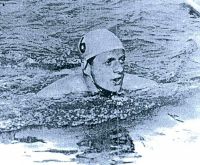
Кад смо ми (мама, тата и ја) изашли из логора Раб и пошли преко Велебита, путем су нам сељаци причали да су усташе убили све логораше. Тако смо тата и ја већ онда знали истину, али смо од маме крили. Кад смо се 1945. вратили у Загреб онда је мама схватила да Мишо више никад неће доћи.
Прву званичну потврду добили смо од Јеврејске опћине из Загреба г. 1963. или 1964. кад смо то требали да мама добије пензију из Њемачке (до њене смрти г. 1983). Ја сам молила информације о Мишиној судбини. Одмах су ми одговорили да је на списку убијених на Јадовну. Више података, које они имају могу ми послати, али није препоручљиво јер је то сувише потресно. Нисам се усудила да више тражим, просто сам се бојала. Тек сада први пут да се спомиње логор Јадовно. Чак га ни Јад Вашем није означио на споменицима. Сада у Јад Вашему спремају у компјуторима податке о шест милијуна. Једног дана желим отићи онамо да видим што тамо пише. Можда ћу сазнати зашто је требало скоро шездесет година да објаве истину, и да овај свијет знаде што су усташе радиле и да то буде одговор онима који тврде да у Хрватским логорима нису убијали. За мене је то сада тешко, као да смо скинули пепео са старих рана који се кроз то доба накупио и да су се ране отвориле, и то много јаче него одмах послије рата.
Када сам дала пресликати Мишину слику, дјевојка која ју је примила рекла је да треба сликати дјечака („ЈЕЛЕД“). И заиста, био је још дијете.
Срдачно те поздрављам, Бланка
Ријека 05. вељаче 1999.
МОЈ БРАТИЋ МЛАДЕН
Штовани господине Полић,
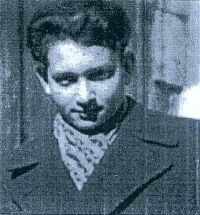
У прилогу шаљем компјуторски снимак Младена Крешића, којег сам издвојио из обитељске слике која је снимљена 1941. године. Миљенко мисли да је то посљедња фотографија Младена. Споменули сте господина Šrengera. Било би ми драго да се пронађе нека боља снимка Младена. Идем редом. Ја Вас молим да пошаљете Miljenku један примјерак овог оманута на адресу: Mark Kresic 10, Esquire Court ROSLYN NY. 11576 USA. Затим желим Вам се захвалити што сте барем на тај начин извукли из заборава трагедију жидовских омладинаца 1941. године. Назвао сам дра. Sobolevskog и њему се такођер захвалио за труд. Био сам јако ганут с писмом – апелом којег је Младенова мама такођер потписала. Особито сам тражио на све стране информације о Младену. Моје сазнање да је Младен био ухапшен 27. свибња 1941. смјештен у просторе Загребачког Збора (стари Велесајам), а затим одведен у Даницу. Моја мајка Zdenka Krešić је половином липња отпутовала из Сушака у Копривницу и посјетила Даницу. Дошла је до једног усташког дежурног и донијела пакет за Младена. Дежурни страже је питао што је Младен мојој мајци, а, она је одговорила да му је мама. Дежурни је тада довео Младена, па га је видјела на удаљености од петнаестак метара. Био је ошишан до коже, насмјешио се је и само махнуо руком. Онда је дежурни рекао мојој мајци да гледа како ће му испоручити пакет, да се не би послије рекло да они пакете задржавају за себе. Одједном је дежурном синуло па је запитао маму како то да не носи прописану жуту ознаку са словом Ж, те да покаже исправе.
Моја се је мајка извукла да није добро разумјела дежурног, јер слабије говори хрватски, да је католик и да има талијански passaporto. Дежурни јој је тада наредио да се удаљи. У повратку за Загреб мајка је видјела како су усташе ловиле неке комунисте у кукурузу и страховито их млатили. Плус тога у Копривници је видјела двије особе објешене на неке бандере. Дошавши у Загреб није жељела престравити Младенове родитеље, али је мојем оцу и мени све испричала. Сматрала је да би сви требали обвезно нестати из Загреба. На Сушаку, односно Sussa provincia di Fiume, договарала се је са сестром Младенове маме да би се нешто требало подузети. Мама се је посавјетовала с мојом учитељицом Nadom Čohar, из сушачког градског комитета КПЈ, која јој је рекла да имају лоше вијести из усташких логора. Пријелом је настао када се је појавио један талијански потпуковник с неколико фотографија лешева из Пага, снимљених након што је логор у Метајни и Сланом расформиран. Мама је одмах отпутовала за Загреб и нашла Миљенкове родитеље све спакиране за путовање. С њима је био и Миљенков дјед г. Lausch. Према гласинама, Младен се требао вратити сваког тренутка па су га чекали. Мајка је посјетила једног татиног братића Жидова који је био предратни симпатизер усташког покрета, али је и он био ужаснут вијестима које су долазиле у Загреб. Био је толико престрашен да се бојао за свој живот. Касније су му усташе омогућиле да оде у Швицарску. Времена није било и мајка је преко неких веза дошла до кривотворених докумената да је Миљенко њен син (био је једанаест година стар) и с њим допутовала на Сушак. Миљенко је за вријеме Италије живио у обитељи сестре своје мајке, а од доласка Нијемаца живио је код нас. Други дио приче о Младену сазнао сам од једног знанца. Мој знанац је био Божо Шварц, тада мајор ЈНА, који је био у групи жидовских омладинаца. Причао ми је да је чуо за неког Крешића али се није могао сјетити Младена. Касније сам установио да је Божо видио Мирка Крешића, који је убијен у Јасеновцу 1942. године. Са Божом, сада умировљеним пуковником ЈНА, сам разговарао пред двије године у New Yorku. Божо данас живи у Београду. Божо ми је дословно рекао да га је у Јадовну препознао један усташа колега из разреда у Загребу. Усташа је тада дошао на идеју да прозове све своје бивше колеге из школе и пронашао је десет презимена. Све је послао у Госпић да чисте град. Било је вруће и када су довршили Божо је питао када ће се вратити на Јадовно. Усташа им је одговорио да нема више Јадовна. Био је то 30. или 31. коловоз 1941. Њих десетак отпремљено је за Јасеновац. Божо је 1942. послан на рад у Феричанце и од тамо побјегао у партизане. Трећи дио приче сазнао сам из чланка из STORIA ILLUSTRATA којег сам превео и послао своједобно у Београд за билтен јеврејске опћине. Чланак није објављен. У чланку се спомиње прва зона, тј. Сушак, Сплит, Задар итд. који су у травњу анектирани Италији. Друга зона је обухватила талијанску окупацију у коловозу 1941. за цца 50 километара од обале, а трећа у лисптопаду 1941. даљњих тридесет километара. Иначе у том чланку се углавном говорило о натезању утасташких, њемачких и талијанских власти око судбине Жидова. Онај талијански потпуковник је у Госпићу чуо за убијања на Велебиту, али није имао никаквих материјалних доказа. Ја сам послије рата као планинар посјетио три пута Јадовно и чуо да су тамо усташе ликвидирале око три тисуће људи бацивши их у Шаранову јаму дубине цца 400 метара. Било је неколико плоча са именима неких мјеста у Славонији (Грубишно поље), нешто сасушеног цвијећа или какав увели вијенац. Нити један знак неке жидовске организације. Од тамношњег становништва сам чуо да су и четници и партизани „користили“ исту јаму за ликвидације. Наводно је и у домовинском рату тамо завршило нешто Срба из Госпића.
Штета да се послије другог свјетског рата није писало о тим догађајима. Но што је ту је. Захваљујући Вама и нашим повјесничарима, неке су ствари ипак дошле на видјело. Не знам како да у педесет година након другог свјетског рата није било приступа у заплијењене усташке архиве. Тко је то спријечавао? Једно појашњење. Миљенко, Младен, Мирко, Бранко су мени братићи, тј. наши очеви су били браћа. У ендехазији су убијени Младен и Мирко, док су се Миљенко и Бранко спасили доласком на Сушак. Сви остали Крешићи су бјежали ка Италији а касније у Швицарску. Нажалост девет чланова велике обитељи је заглавило у Auschwitzu.
Толико о тим немилим догађајима. Срдачан поздрав
Тито Крешић
ТРАГЕДИЈА НА ЈАДОВНУ ЉЕТА 1941.
У броју 31. „Новог Оманута“ изашао је чланак под насловом Хапшење 165 жидовских омладинаца у Загребу у свибњу 1941. године. Мишљења сам да је тај чланак изврсно написан, аутори Нарциса Lengel-Krizman i Mihael Sobolevski успјешно су приказали то трагично поглавље у низу трагедија Жидова Хрватске за вријеме Другога свјетског рата и тиме дали важан прилог повијести холокауста у Хрватској. Тај догађај треба памтити и истицати да се не би заборавило што се догодило у тим страшним временима. Био је то особито тежак ударац, јер се намјеравало потпуно уништити загребачку жидовску младеж и то готово на самом почетку, прије низа додатних удараца и уништења Жидова Хрватске. Мени је особно изнимно тешко и жалосно видјети попис свих тих красних омладинаца, међу њима много мојих најбољих пријатеља којих више нема. Осјећам да је моја света дужност написати све што знам о њиховој трагичној судбини. У чланку се спомиње и моје име међу биљешкама и чини се да ауторима није било познато како сам ја ушао у ту групу и послије се спасио, а да нисам на попису свих ухапшених омладинаца. Осим тога има неколико малих исправака које бих хтио додати и напоменути понеке чињенице које су мени познате. Ради тога морам укратко описати дио својег живота у то доба.
Ја сам такођер требао бити укључен у ту групу, али сам био ухапшен већ раније (17. свибња 1941) као „државно-непријатељски елемент, комунист, љевичар“, како су ми рекли за преслушавања. Био сам одведен у затвор у Петрињску улицу у Загребу, био сам тамо девет дана у ћелији у страшним увјетима и затим пребачен у логор у Керестинец. Када су усташе дошли по мене да ме хапсе заједно с осталим омладинцима, 30. свибња 1941, већ сам био утамничен. У логору у Керестинцу налазила се скупина комуниста и осим њих загребачки одвјетници Жидови и остали затвореници под разним оптужбама. Комунисти су били врло добро организирани, мене нису примили у свој колектив, јер ме нису добро познавали. У ноћи 13-14. српња извршили су пробој и бијег из логора, који је трагично завршио погибијом готово свих њих, осим неколицине. Сљедећи дан све нас преостале пребацили су у Госпић. Тамо смо били затворени у згради која је служила као градски кино заједно с већом групом жидовских обитељи из градова Хрватске.
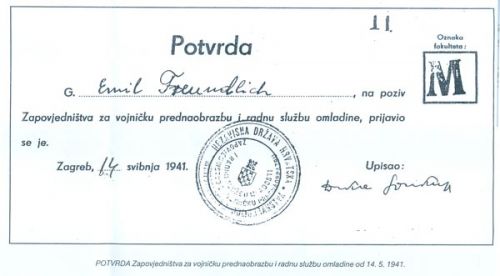
На почетку смо се могли кретати у граду под паском усташких чувара и том пригодом сам се састао с неким мојим друговима, који су ми причали да су били у логору на Јадовну одвојени од осталих, а затим одведени у Госпић да раде као „чистачи града Госпића“. Неколико дана касније један од њих (Saša Blivajs) био је пуштен кући (то је могло бити почетком коловоза) и онда су дошли по мене да га замијеним. Тако сам био с том групом десеторице на релативно лакшем раду два или три тједна и од њих знадем што се догодило и што су они прошли. У међувремену је логор у Госпићу био премјештен на неко сељачко добро, два километра изван града. Средином коловоза прочуло се да ће Талијани преузети управу на цијелом територију и да ће сви логори бити премјештени. Нас десеторицу пребацили су у логор, гдје је већ била група мушких заточеника из Пага. Они су нам причали да су жене и дјеца били одвојени и они не знају што је с њима (Све жене и дјеца били су убијени на Пагу кратко вријеме након доласка). Чекали смо и надали се да ће доћи и логораши из Јадовна, али њих није било. Ујутро 20. коловоза ходали смо пјешице из логора према колодвору, на путу су натоварена сељачка кола прошла преко моје ноге и усташе су ме одвеле у болницу у Госпићу. (Тај чин никада нисам могао схватити). Тамо ме је прегледао лијечник, којему сам рекао да сам затворен у жидовском логору, он ми је тихо споменуо да је моја рана сасвим лагана, а усташама је енергично изјавио да морам остати у болници. Усташе су отишли, а један млади лијечник (или можда још студент), данас prof. dr. Ante Fulgosi, који је био на раду у тој болници и којег сам препознао, једноставно ми је савјетовао да одем из болнице, што сам и учинио. Моји су родитељи у то вријеме били у Госпићу, тражећи да ме се пусти из логора, јер су набавили за мене пропусницу за Сушак. Управа логора није на то пристала, али након што сам изишао из болнице скривали смо се пет дана а затим отишли у Сушак. Након неколико мјесеци прешли смо границу близу Трста те су нас интернирали Талијани (тзв. confino libero). Послије смо пребачени у логор на југу Италије (Feramonti). Ослободили су нас Енглези и ја сам приступио партизанима, радио сам у санитету као студент медицине и преживио рат.
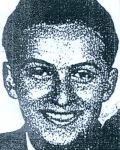
Egon Berger (ELIT) |
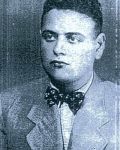
Solomon Klugmann |
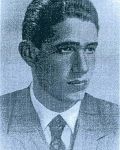
Pavao Mazerhofer |
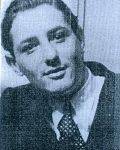
Gerhard Wilhelm |
При напуштању логора у Госпићу спасио се и одвјетник Edo Neufeld и још за вријеме рата стигао је у Швицарску. Осим њега знам за још један млади брачни пар које се успио извући из транспорта на путу према колодвору, скривао се неко вријеме покрај цесте и послије стигао у Сушак, њихових имена не знам. Сви остали били су одведени у логоре, мушкарци у Јасеновац, жене у други логор, не знам точно гдје. Осим мале групе која је успјела побјећи из логора, међу њима Božo Švarc, једини од омладинаца, сви други су погинули у логорима. Моја прича није важна, спомињем је само да објасним како сам ушао у ту групу и одакле моје информације. Усташке су власти убрзо након оснутка Независне Државе Хрватске припремиле уништење загребачке жидовске омладине. Сви смо добили позив да се пријавимо за радну службу и били регистрирани средином свибња 1941. Попис је био извршен на спортском стадиону у Максимиру. Том пригодом добио сам и жидовску легитимацију. Намјера усташа била је ухапсити и уништити све омладинце Загреба, велик број међу њима били су активни чланови клуба Макаби, али то за усташе није био критериј. Спасили су се само они који су побјегли раније, они који су били из мјешовитих бракова или забуном нису били укључени.
Сви омладинци, њих 165 на броју, отишли су храбро, поносно и без страха на тај пут, за који су мислили да ће бити радни логор за неко вријеме. У споменутом чланку пише да у првим мјесецима постојања НДХ власти нису прогањале ни затварале комунисте. Морам то исправити, јер су комунисти били ухапшени и затворени у великом броју по разним градским затворима и скупљени у логору Керестинец већ у травњу и свибњу, дакле прије нападања Нијемаца на Совјетски Савез (Zvonimir Komarica: Керестинечка кроника, Глобус, Загреб 1989) а то је и моје особно запажање. Група омладинаца била је одведена из Загреба у логор „Даница“ покрај Копривнице. Тамо су били присиљени радити тешки физички посао на закопавању протутенковских ровова. Храна је била слаба, али морал цијеле групе на завидној висини. (Božo Švarc, Јеврејски Алманах, Београд, 1965). С поносом су радили, другарством и колективним духом су свладавали потешкоће. Средином српња пребачена је цијела група у Госпић и одмах одведена у логор на Јадовну. Прилике су тамо биле ужасне. Након неколико дана посјетио је логор усташки официр именом Михаловић наших година. Тамо сам видио и неке колеге из средње школе. Он је тај који је дао налог да се десеторица његових познатих одведе на лакши посао у Госпић.
Десеторица премјештених, нису, како ми је речено, били баш они које је тај усташа затражио, настала је, чини се, збрка с именима. (Усташе у логору нису били баш најписменији, благо речено). У вашем чланку написана су имена те десеторице, моје име међу њима. Како је моје име накнадно додано, требало би бити десет имена без мојега, ни ја се не могу сјетити тко је још био. За једнога није име точно наведен: „Александар, презиме неутврђено“, био је заправо Miljenko Aleksander (Александер је било презиме). Он је у попису број 5. Тих десет омладинаца били су у логору на Јадовну само неколико дана и затим пребачени у Госпић. Убијање тих утамниченика логора Јадовно услиједио је према мојем рачуну, врло рано, можда само неколико дана након доласка у логор, а не како пише у чланку, тек при крају, у другој половици коловоза, када су сви логори у околици били ликвидирани.
На Јадовну су били и други Жидови из других градова Хрватске, углавном све млади људи. По попису којега сам добио од „Јад Вашема“, али који ми се не чини сасвим исправан, јер се нека имена понављају, а нека су испуштена, наведено је да је број убијених Жидова био 288. Осим њих су убијени и многобројни Срби, већином сељаци из околине. Кад је усташама било јасно да ће морати напустити тај терен (од Приморја па све до близу Карловца), нису хтјели да Талијани сазнају о убојствима која су починили. Због тога су, како ми се чини, и престали с масовним покољима. Када је Саша Бливајс био пуштен на слободу, хтјели су омладинци у Госпићу довести неколицину или барем једнога на његово мјесто и изјавили да их треба бити више да би могли успјешно обавити посао (чишћења госпићких улица). Речено им је тада (у првој половици коловоза) да из Јадовна не могу никога пустити (сие!). Онда су затражили мене, који сам био у Госпићу, и без даљњега сам био премјештен у ту групу. Да је онда било још живих логораша у Јадовну, они би оданде вјероватно некога премјестили.
Једном сам потплатио неког усташу, предао му два пакета за моја два пријатеља у Јадовну, написао им писмо и чекао од њих одговор. Усташа је наравно узео и новац и пакете, али ипак ми се чини да би се вјероватно вратио да су они још били на животу и да би поновно од мене и од других пријатеља добио пакете и новац. Још би се хтио осврнути на улогу Талијана. Талијанска војска била је стално у близини и мора да су знали за све што се збива. Познато је беспримјерно владање Талијана за вријеме фашизма и знаде се коју су позитивну улогу имали Талијани у спашавању Жидова Југославије и других земаља. (Menahem Shelach: Blood Account, The Rescue of Croatian Jews by the Italians 1941-1943, на хебрејском Sifriath Poalim Publishing House, Tel Aviv 1986). Мислим да та чињеница није у повијесним подацима доста истакнута. Али у то вријеме љета 1941, није талијанска војска учинила оно што је можда могла учинити да спасе Жидове из логора. Тешко је то данас установити, какве су онда биле могућности, и чини ми се да ће то заувијек остати нејасно (Zvi Loker, The Italians and the Jews of Croatia, Holocaust and Genocide Studies, Washington D.C. 1993).
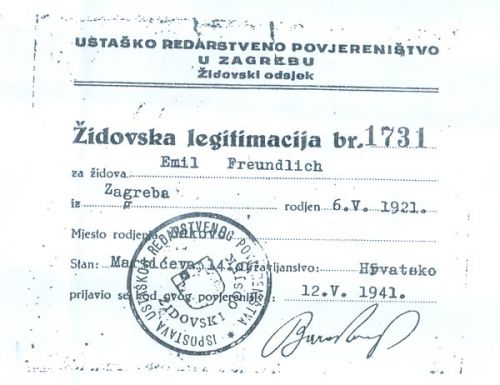
При крају бих желио рећи да ми се наслов чланка не чини примјереним. Хапшење је наиме било само мален и почетни дио те велике трагедије. Мислим да би бољи и точнији наслов био Убијање, Покољ, Погибија или слично. То би више одговарало ономе што се догодило и што је тако добро било описано у споменутом чланку. Тешко је гледати попис тих имена. Сто шездесет и пет имена, сто шездесет и пет красних омладинаца. Само двојица су преживјела тај покољ, моја два присна и драга пријатеља, Saša Blivajs i Božo Švarc. Свако име један човјек, једно људско биће, цијели свијет. Сви су били млади, спремни за живот, а нестали су тако трагично, Завриједили су да их се памти и спомиње и не заборави док је год могуће. Било је то тешко и жалосно поглавље у повијести страдања загребачких Жидова. Желим завршити с хебрејском изреком Jehi zichram baruch. Нека успомена на њих буде благословљена.
Emil Freundlich,
Nahariya, Izrael
(умро тамо 2006.г.)
НОВИ ОМАНУТ
Загреб, Бр. 65/66, мај – јун 2000
Спомен – плоча за Јадовно
Жидовска опћина у Загребу у својој окружници (Hadašon) за травањ 2000. у својој рубрици Догађања укратко најавила је израду спомен – плоче и отворила могућност свима да се прилозима придруже том пројекту. О чему је ријеч?
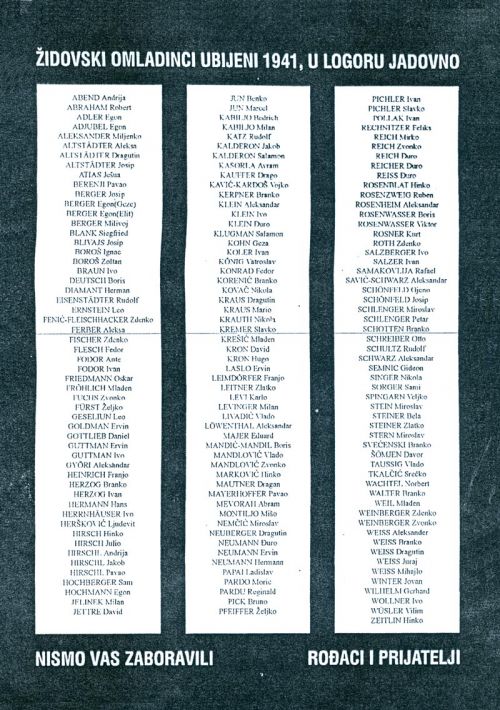
У организираном прогону Жидова, 29. и 30. свибња 1941, под лажним образложењем да одлазе на „вршење ђачке радне службе у трајању од осам тједана“, ухапшена је у Загребу група од 165 младића старости од седамнаест до двадесет пет година и у три теретна вагона одведена у Копривницу. Они су сви, осим двојице, након Копривнице и Госпића убијени у логору Јадовно (Narcisa Lengel-Krizman i Mihael Sobolevski, Novi Omanут 34/35, свибањ/коловоз 1999). Потакнут поновним сјећањем на ту трагедију, prof. dr. Emil Freundlich (студент загребачког медицинског факултета, сада живи у Nahariji) покренуо је, поткрај прошле године, пројект истицања спомен-плоче нашим пријатељима нашој генерацији која није имала среће преживјети страхоте прогона. Нажалост, таквих је групних и појединачних депортација и младих и старијих Жидова који су животе оставили у Јадовном, а и у другим логорима, било много. Иако имена тих жртава нису наведена на спомен-плочи која је у припреми, та ће плоча оживити сјећање и на њих, а могуће и потакнути преживјеле и потомке жртава да и даље раде на учвршћивању сјећања на жртве терора те наставе са истицањем таквих спомен плоча. Захваљујући сусретљивости Вијећа жидовске опћине Загреб добили смо сугласност да се плоча истакне у згради Опћине у Загребу. Надамо се да ће, у ближој или даљој будућности, ова плоча и све оне које ће је евентуално слиједити, наћи своје мјесто у неком спомен-центру (Прашка улица!!!). Иако трошкови израде и постављања плоче нису недостижно високи за остварење тог пројекта пожељна је, а и потребна финансијска припомоћ свих оних који су је у стању пружити и на тај начин још јаче истакнути своје сјећање и суосјећање према нашим пријатељима и рођацима. Свима који се одазову својим прилогом, али и онима који се само сјете патњи наших младића од срца се захваљујемо.
Dr. Boris Blau
Dr. Željko Šrenger
ОДЈЕЦИ
Уз чланак
„Хапшење 165 жидовских омладинаца“
у Омануту бр. 31
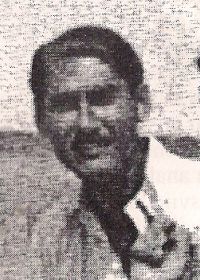
Eto (Karlo) Levi |
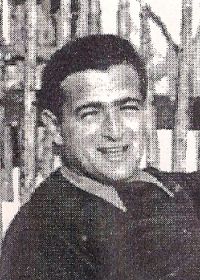
Ervin Laslo |
Када сам се 1945.г. вратила у Загреб, дали су ми пријатељи пар сличица на којима су и моји драги. Њихови ликови не би изблиједили у мојој души да и немам тих слика. Ипак их волим. Драго ми је да се све то сада објављује. Тако ће бар донекле преживјети успомена на њих кад задњи од нас оде. Било их је пуно с тог жалосног пописа, али имам само Ervinovu i Etovu слику.
Ervin Laslo доживио је 21 годину. Студио је грађевинарство. Био је добар студент, образован и фин младић – предобар за онај страшни свијет. Можда би се био могао спасити да није превише мислио о својој баки која га је одгојила. С њим је нестала још једна гранчица жидовске будућности. Породица Леви састојала се од од лијечника, два сина студента медицине, Eta (Karlo) i Lea (Aurel) и кћери Malkice, моје колегице из разреда. Задњу ноћ у Загребу провела сам код њих. Тада сам их задњи пут видјела. Нитко није преживио холокауст. Још упропаштених нада жидовских и људске будућности. Ето и Ervin су на онај страшни начин убијени у Јадовну, а с њима и сви моји колеге из разреда и сви моји пријатељи.
Да се никада не заборави!
Feja Frank
З а г р е б
Господине уредниче, Чланак о хапшењу 165 омладинаца, Жидова, г. 1941, коаутора N. Lengel – Krizman i M. Sobolevskog, објављен у Вашем часопису бр. 31, XI – XII 98, привукао је моју посебну пажњу из више разлога. Прије свега, чланак је писану студиозно, на основу истраживања архивске грађе, а тиме и вјеродостојан. Али, има и једну другу димензију, а то је да су наведена сва доступна имена. Тиме је и хуман. То је један од ријетких примјера гдје су жртве усташког антисемитског терора наведене појединачно, а именом и презименом и својим појединачним судбинама, а нису само пуке бројке. Надаље, постоји још један разлог мог јављања. На том је попису неколико мојих школских другова. Међутим, на њему нема тројице, који су били у истом разреду са наведенима. То су: Zdenko Gostl, Bruno- Valger Tausk i Bruno Herzog. Из чињенице да су нестали у исто вријеме као и остали колеге – иако неман никаквих доказа за то – претпостављам да су и они морали бити у тој групи. Одличилите се објавити ове моје ретке, можда се јави неко ко зна њихову судбину и судбину њихових фамилија. На крају, још један трагичан детаљ. Сестра једне од жртава Miše Montilja (бр. 99. пописа), која је преживјела НДХ терор тако што је побјегла у „фашистичку“ Италију, испричала ми је да се њен брат – имао је непуних 18 година – успио јавити једном дописницом, на којој је – како се ради о сефардској фамилији – дописао на „ладино“ језику: „Пуно поздрава од глади и батина!“
Са изразом мог штовања
Вељко Прибић
Документи у прилогу:
Novi omanut, Zagreb, Novembar-Decembar, 1998/5759, str.6
Novi omanut, Zagreb, Novembar-Decembar, 1998/5759, str.7
Novi omanut, Zagreb, Novembar-Decembar, 1998/5759, str.8
Novi omanut, Zagreb, Novembar-Decembar, 1998/5759, str.9
Novi omanut, Zagreb, Maj-Avgust, 1999/5769, str.21
Novi omanut, Zagreb, Maj-Avgust, 1999/5769, str.22
Novi omanut, Zagreb, Maj-Avgust, 1999/5769, str.23
Ha-kol, br.65-66, Maj-Juni, 2000, str.15b
Ha-kol, br.65-66, Maj-Juni-2000, str.15
Novi omanut, Zagreb, 1999/32-33, str.17
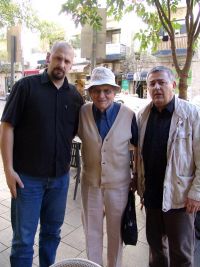 |

